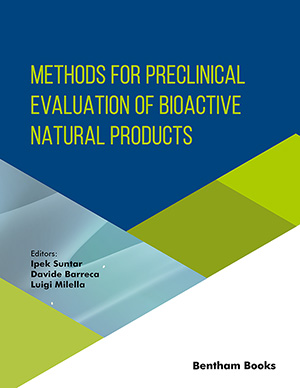Abstract
We present an overview of genetic, metabolomic, proteomic and neurochemical studies done mainly in our laboratories that could improve prediction, mechanistic understanding and possibly extend to diagnostics and treatment of alcoholism and alcohol addiction. Specific polymorphisms in genes encoding for interleukins 2 and 6, catechol-O-methyl transferase (COMT), monaminooxidase B (MAO B) and several other enzymes were identified as associated with altered risks of alcoholism in humans. A polymorphism in the gene for BDNF has been linked to the risk of developing deficiences in colour vision sometimes observed in alcoholics. Metabolomic studies of acute ethanol effects on guinea pig brain cortex in vitro, lead to the identification of specific subtypes of GABA(A) receptors involved in the actions of alcohol at various doses. Acute alcohol affected energy metabolism, oxidation and the production of actaldehyde and acetate; this could have specific consequences not only for the brain energy production/utilization but could influence the cytotoxicity of alcohol and impact the epigenetics (histone acetylation). It is unlikely that brain metabolism of ethanol occurs to any significant degree; the reduction in glucose metabolism following alcohol consumption is due to ethanol effects on receptors, such as α4β3δ GABA(A) receptors. Metabolomics using post-mortem human brain indicated that the catecholaminergic signalling may be preferentially affected by chronic excessive drinking. Changes in the levels of glutathione were consistent with the presence of severe oxidative stress. Proteomics of the post-mortem alcoholic brains identified a large number of proteins, the expression of which was altered by chronic alcohol, with those associated with brain energy metabolism among the most numerous. Neurochemical studies found the increased expression of glutamate transporter GLAST/EAAT1 in brain as one of the largest changes caused by alcoholism. Given that GLAST/EAAT1 is one of the most abundant proteins in the nervous tissue and is intimately associated with the function of the excitatory (glutamatergic) synapses, this may be among the most important effects of chronic alcohol on brain function. It has so far been observed mainly in the prefrontal cortex. We show several experiments suggesting that acute alcohol can translocate GLAST/EAAT1 in astrocytes towards the plasma membrane (and this effect is inhibited by the GABA(B) agonist baclofen) but neither the mechanism nor the specificity (to alcohol) of this phenomenon have been established. Furthermore, as GLAST/EAAT1 is also expressed in testes and sperm (and could also be affected there by chronic alcohol), the levels of GLAST/EAAT1 in sperm could be used as a diagnostic tool in testing the severity of alcoholism in human males. We conclude that the reviewed studies present a unique set of data which could help to predict the risk of developing alcohol dependence (genetics), to improve the understanding of the intoxicating actions of alcohol (metabolomics), to aid in assessing the extent of damage to brain cells caused by chronic excessive drinking (metabolomics and proteomics) and to point to molecular targets that could be used in the treatment and diagnosis of alcoholism and alcohol addiction.
Keywords: Ethanol, alcoholism, addiction, brain metabolism, metabolom, genetics, epigenetics, interactomics, glutamate transport, GLAST, EAAT1.
[http://dx.doi.org/10.1016/j.bcp.2007.06.021] [PMID: 17669369]
[http://dx.doi.org/10.1300/J251v07n03_02] [PMID: 3066194]
[http://dx.doi.org/10.1037/h0058775] [PMID: 13233369]
[http://dx.doi.org/10.3389/fpsyt.2018.00548]
[http://dx.doi.org/10.2174/138161212798919110] [PMID: 22236117]
[http://dx.doi.org/10.1111/adb.12204] [PMID: 25603899]
[http://dx.doi.org/10.1034/j.1601-5215.2003.00040.x] [PMID: 26983653]
[PMID: 16648777]
[http://dx.doi.org/10.1016/j.neulet.2011.05.038] [PMID: 21640793]
[http://dx.doi.org/10.1038/sj.jcbfm.9600453] [PMID: 17293844]
[http://dx.doi.org/10.1111/j.1471-4159.2008.05742.x] [PMID: 19014380]
[http://dx.doi.org/10.1002/jnr.22649] [PMID: 21618581]
[http://dx.doi.org/10.1007/s11481-014-9579-4] [PMID: 25577264]
[http://dx.doi.org/10.1111/j.1471-4159.2009.05803.x] [PMID: 19393016]
[http://dx.doi.org/10.1111/jnc.12634] [PMID: 24313287]
[http://dx.doi.org/10.3109/07853899009148935] [PMID: 1701093]
[http://dx.doi.org/10.1016/S0197-0186(02)00046-3] [PMID: 12213224]
[http://dx.doi.org/10.1111/j.1471-4159.1991.tb03764.x] [PMID: 1712827]
[http://dx.doi.org/10.1016/j.pharmthera.2010.03.003] [PMID: 20399807]
[http://dx.doi.org/10.1038/16012] [PMID: 10570485]
[http://dx.doi.org/10.1016/S0168-0102(02)00094-9] [PMID: 12354627]
[http://dx.doi.org/10.1111/j.1471-4159.2010.06901.x] [PMID: 20681954]
[http://dx.doi.org/10.1073/pnas.1204376109] [PMID: 22753476]
[http://dx.doi.org/10.1152/physrev.00013.2008] [PMID: 19342616]
[http://dx.doi.org/10.1111/j.1471-4159.2004.02880.x] [PMID: 15663488]
[http://dx.doi.org/10.1038/sj.jcbfm.9600257] [PMID: 16395280]
[http://dx.doi.org/10.1023/A:1014842303583] [PMID: 11926273]
[http://dx.doi.org/10.1002/jnr.21108] [PMID: 17086545]
[http://dx.doi.org/10.1016/S0741-8329(02)00323-3] [PMID: 12657371]
[http://dx.doi.org/10.1111/j.1530-0277.2008.00772.x] [PMID: 18715279]
[http://dx.doi.org/10.1016/j.neuroimage.2005.07.004] [PMID: 16085426]
[http://dx.doi.org/10.1111/j.1530-0277.1977.tb05765.x] [PMID: 201177]
[http://dx.doi.org/10.1007/978-1-4757-0632-1_12]
[http://dx.doi.org/10.1111/j.1471-4159.1975.tb03881.x] [PMID: 235601]
[http://dx.doi.org/10.1111/j.1530-0277.1997.tb04255.x] [PMID: 9309319]
[http://dx.doi.org/10.1073/pnas.0912810107] [PMID: 20534463]
[http://dx.doi.org/10.1007/s11065-019-09411-w] [PMID: 31512192]
[http://dx.doi.org/10.1016/j.bbi.2011.01.006] [PMID: 21262339]
[http://dx.doi.org/10.1093/alcalc/agt164] [PMID: 24217958]
[http://dx.doi.org/10.1073/pnas.1306011110] [PMID: 23940368]
[http://dx.doi.org/10.1111/j.1471-4159.2009.05895.x] [PMID: 19393008]
[http://dx.doi.org/10.1007/s11064-012-0847-5] [PMID: 22851350]
[http://dx.doi.org/10.1016/0006-8993(75)90835-5] [PMID: 234271]
[http://dx.doi.org/10.1016/0006-291X(66)90753-4] [PMID: 5961085]
[http://dx.doi.org/10.1111/jnc.13916] [PMID: 27925207]
[http://dx.doi.org/10.1002/jnr.24038] [PMID: 28244146]
[http://dx.doi.org/10.1523/JNEUROSCI.18-14-05225.1998] [PMID: 9651205]
[http://dx.doi.org/10.1073/pnas.0604392103] [PMID: 16790548]
[http://dx.doi.org/10.1016/S0006-291X(03)01040-4] [PMID: 12804592]
[http://dx.doi.org/10.1111/j.1530-0277.2008.00630.x] [PMID: 18336638]
[http://dx.doi.org/10.1093/alcalc/ags004] [PMID: 22301686]
[http://dx.doi.org/10.1016/j.ejphar.2004.12.006] [PMID: 15680252]
[http://dx.doi.org/10.1124/jpet.115.223867] [PMID: 25886906]
[http://dx.doi.org/10.1111/acer.13843] [PMID: 30030934]
[http://dx.doi.org/10.1016/j.bbrc.2008.06.006] [PMID: 18555008]
[http://dx.doi.org/10.1016/j.bbrc.2015.04.154] [PMID: 26056001]
[http://dx.doi.org/10.1371/journal.pone.0075868] [PMID: 24073283]
[http://dx.doi.org/10.1021/pr2008384] [PMID: 22309199]
[http://dx.doi.org/10.1016/j.bbrc.2008.09.039] [PMID: 18804449]
[http://dx.doi.org/10.1111/j.1530-0277.2009.01091.x] [PMID: 19951295]
[http://dx.doi.org/10.1152/ajpgi.00575.2007] [PMID: 18239056]
[http://dx.doi.org/10.1021/acs.jproteome.8b00800] [PMID: 30644754]
[http://dx.doi.org/10.1021/tx300002q] [PMID: 22502949]
[http://dx.doi.org/10.1016/j.lfs.2007.07.030] [PMID: 17826801]
[http://dx.doi.org/10.1021/tx700324t] [PMID: 18095657]
[http://dx.doi.org/10.1002/elps.200900045] [PMID: 19382137]
[http://dx.doi.org/10.1007/s11064-016-1830-3] [PMID: 26801172]
[http://dx.doi.org/10.1016/S0006-8993(03)03024-5] [PMID: 12914964]
[http://dx.doi.org/10.1136/jmg.34.7.594] [PMID: 9222972]
[http://dx.doi.org/10.1073/pnas.97.9.4926] [PMID: 10781100]
[http://dx.doi.org/10.1016/j.neuint.2006.10.009] [PMID: 17141922]
[http://dx.doi.org/10.1016/j.neuint.2008.04.003] [PMID: 18513832]
[http://dx.doi.org/10.1111/j.1471-4159.2009.06141.x] [PMID: 19457110]
[http://dx.doi.org/10.1016/j.neuint.2007.04.001] [PMID: 17513015]
[http://dx.doi.org/10.1586/14789450.4.4.539] [PMID: 17705711]
[http://dx.doi.org/10.1111/j.1530-0277.2007.00437.x] [PMID: 17561921]
[http://dx.doi.org/10.1111/j.1530-0277.2008.00814.x] [PMID: 18945221]
[http://dx.doi.org/10.1016/j.neuint.2012.08.013] [PMID: 22995788]
[http://dx.doi.org/10.1007/s11064-018-2600-1] [PMID: 30043189]
[http://dx.doi.org/10.1111/acer.12243] [PMID: 24033426]
[http://dx.doi.org/10.1038/npp.2013.182] [PMID: 23900301]
[http://dx.doi.org/10.1016/0006-8993(94)01440-S] [PMID: 7773699]
[http://dx.doi.org/10.1016/S0006-8993(98)01340-7] [PMID: 10082858]
[http://dx.doi.org/10.1111/j.1530-0277.2008.00754.x] [PMID: 18657127]
[http://dx.doi.org/10.1016/j.neuroscience.2010.01.061] [PMID: 20153402]
[http://dx.doi.org/10.1096/fj.01-0593com] [PMID: 11772933]
[http://dx.doi.org/10.1016/j.neuint.2019.02.009] [PMID: 30817938]
[http://dx.doi.org/10.1038/234297b0] [PMID: 4333164]
[http://dx.doi.org/10.1111/j.1471-4159.1972.tb01325.x] [PMID: 4404455]
[http://dx.doi.org/10.1016/S0301-0082(00)00067-8] [PMID: 11369436]
[http://dx.doi.org/10.1016/j.neuropharm.2019.03.002] [PMID: 30851309]
[http://dx.doi.org/10.1093/ijnp/pyx050] [PMID: 28605494]
[http://dx.doi.org/10.1038/s41537-017-0037-1] [PMID: 28935880]
[http://dx.doi.org/10.1007/s11064-015-1605-2] [PMID: 25972039]
[http://dx.doi.org/10.1248/bpb.25.291] [PMID: 11913521]
[http://dx.doi.org/10.1523/JNEUROSCI.4255-14.2015] [PMID: 25834045]
[http://dx.doi.org/10.1016/j.neuint.2016.05.009] [PMID: 27235987]
[http://dx.doi.org/10.1046/j.1471-4159.2003.01886.x] [PMID: 12859677]
[http://dx.doi.org/10.1007/s11064-009-9982-z] [PMID: 19440835]
[http://dx.doi.org/10.2174/187152710790966614] [PMID: 20201813]
[http://dx.doi.org/10.1007/s11064-018-2600-1] [PMID: 30043189]
[http://dx.doi.org/10.1007/s11064-010-0274-4] [PMID: 20890657]
[http://dx.doi.org/10.1016/j.neuroscience.2013.09.043] [PMID: 24095695]
[http://dx.doi.org/10.1007/BF01084265] [PMID: 7514715]
[PMID: 8856744]
[http://dx.doi.org/10.1002/(SICI)1098-1136(199705)20:1<1::AID-GLIA1>3.0.CO;2-E] [PMID: 9145300]
[http://dx.doi.org/10.1016/j.neuint.2016.03.014] [PMID: 27013346]
[http://dx.doi.org/10.1046/j.1471-4159.1997.69052132.x] [PMID: 9349559]
[http://dx.doi.org/10.1111/j.1440-1681.2004.04090.x] [PMID: 15566390]
[http://dx.doi.org/10.1016/j.neuint.2012.01.013] [PMID: 22306776]
[http://dx.doi.org/10.1002/prca.200600417] [PMID: 21136612]
[http://dx.doi.org/10.1111/j.1749-6632.1998.tb08221.x] [PMID: 9668664]
[http://dx.doi.org/10.1177/002215540305100612] [PMID: 12754292]
[http://dx.doi.org/10.1677/joe.0.1810233] [PMID: 15128272]
[http://dx.doi.org/10.1002/j.1939-4640.2004.tb02769.x] [PMID: 14662797]
[http://dx.doi.org/10.1038/aja.2010.99]
[http://dx.doi.org/10.1016/j.mehy.2016.11.015] [PMID: 28012606]































